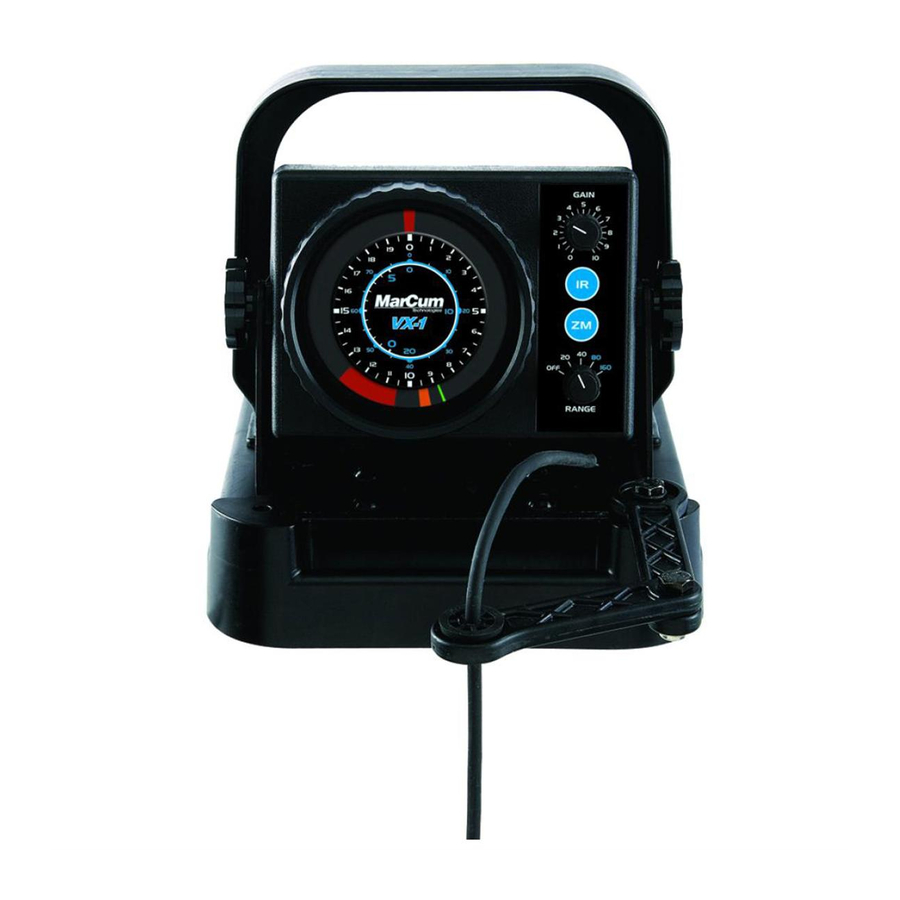
Subscribe to Our Youtube Channel
Summary of Contents for Marcum Technologies VX-1P
- Page 1 USER MANUAL 3 COLOR SONAR ICE SYSTEM MA-034-MK Rev A, Date: 9/2/08...
-
Page 2: Table Of Contents
Table of Contents Introduction... 3 General Description ... 3 Ice System Set-Up ... 3 Open Water Set-Up... 3 High-Speed Transducer Installation ... 3 Puck Transducer Installation ... 4 Operation... 4 Ice System Only ... 5 Signal Interpretation ... 5 Charging the Battery ... 5 User Tips ... -
Page 3: Ice System Set-Up
VX-1 power cord to the battery terminals, and route the transducer cable through the ice arm and connect to the back of the sonar unit. You will also need to place the unit in the enclosed softcase. The transducer is weighted and will self-align when suspended from the adjustable ice arm. - Page 4 If the transducer is tilted or angled, you won’t receive a signal on your sonar display. Do not mount the transducer next to the propeller. Turbulence from the propeller may cause disruption in the sonar display.
-
Page 5: Signal Interpretation
This will make it difficult or impossible to pick it up on the display. Dead Zone - All sonar units will have a dead zone in certain circumstances. This occurs on sharp drop-offs where the transmit beam (cone) hits the shallower edge of the drop-off and returns before the deeper edge returns. -
Page 6: User Tips
User Tips Reading Through Ice - The VX-1 will provide accurate information reading through ice providing the ice is reasonably clear. Ice that appears milky or full of air bubbles will make it difficult or impossible to get an accurate reading. To send and receive the best signal, wet the ice with water to improve the coupling of the transducer to the ice. - Page 7 responsibility to track their products sent out in the mail or other forms of delivery service. Nature Vision Inc. will not be liable for lost packages sent out in the mail. Unless specified otherwise, do not include batteries or other accessories when returning the product for repair. Nature Vision, Inc will not be responsible for lost or damaged accessories.
- Page 8 - 8 -...












Need help?
Do you have a question about the VX-1P and is the answer not in the manual?
Questions and answers